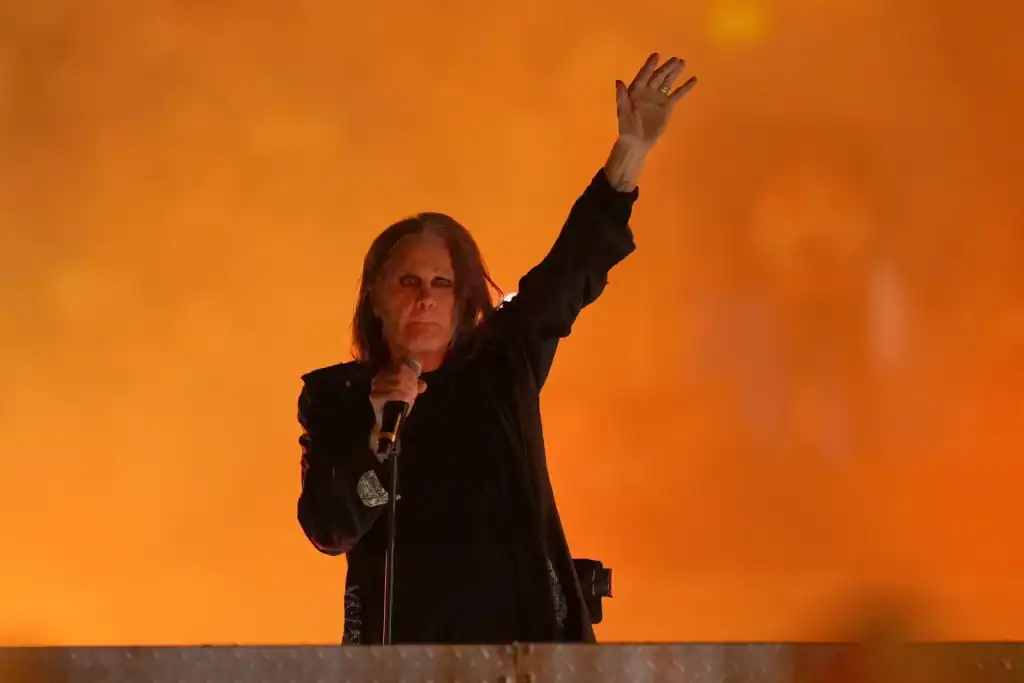The Enduring Legacy of the Woodward Dream Cruise
 It begins, as it always does, with a sound. Not the cannon-crack of a dragster, but something subtler, more elemental: the low, syncopated murmur of a V8, felt as much in the rib cage as heard by the ear. On the Thursday before Dream Cruise weekend, it surfaces along Woodward Avenue like an old memory come to life. The engines idle at red lights in Ferndale, slip past the boutiques of Birmingham, hum over the rolling flats of Bloomfield Hills. They are apparitions in chrome and steel, longtail Buicks, shark-fin Chevrolets, candy-colored Mustangs, returning to the first paved mile in America for their yearly visitation.
It begins, as it always does, with a sound. Not the cannon-crack of a dragster, but something subtler, more elemental: the low, syncopated murmur of a V8, felt as much in the rib cage as heard by the ear. On the Thursday before Dream Cruise weekend, it surfaces along Woodward Avenue like an old memory come to life. The engines idle at red lights in Ferndale, slip past the boutiques of Birmingham, hum over the rolling flats of Bloomfield Hills. They are apparitions in chrome and steel, longtail Buicks, shark-fin Chevrolets, candy-colored Mustangs, returning to the first paved mile in America for their yearly visitation.
To call the Woodward Dream Cruise a car show is like calling a pilgrimage a stroll. It is, more truthfully, a living, rumbling archive of a time when Detroit didn’t just manufacture automobiles; it minted the American sense of itself. What began in 1995 as a neighborhood fundraiser has swollen into the world’s largest single-day automotive event, forty thousand classic cars, a million spectators, and traffic of biblical proportions. Yet its emotional coordinates are fixed in the nineteen-fifties and sixties, when Woodward was less a road than a proving ground. Teenagers in letterman jackets and pedal pushers moved in great, gleaming loops from Ted’s Drive-In back north, the circuit as hypnotic as it was infinite.
The cars provided the percussion: the sharp upshift of a four-speed, the low, rolling bass of dual exhausts. The melody, always, came from the radio. On Halloween night in 1963, a small AM station in Dearborn, WKNR, reemerged from obscurity as “Keener 13,” a transformation so swift and improbable it still circulates among broadcast historians with the air of myth: last place to first in ninety-one days.
Keener’s secret was velocity. While rivals lumbered through playlists and patter, Keener lived in the bloodstream of the moment. Thirty-one songs in rotation, no more, no less, meant the next hit was never far away. Personalities like Dick Purtan, Scott Regen and Bob Green, spoke with the rapid-fire intimacy of co-conspirators. They did not just introduce the music. They became a part of the experience. And in Detroit, that meant a front-row seat to Motown’s golden hour. On The Head Burger’s “Motown Mondays,” Scott Regen slid the latest 45s from the Supremes, the Temptations, the Four Tops directly into the hands of the kids steering GTOs and Fairlanes up and down Woodward. The city’s sound, equal parts factory grit and church-floor grace, seemed to be pouring out of the same foundry as the cars themselves.
To be seventeen, behind the wheel of a ’66 Mustang, Keener 13 broadcasting “Reach Out I’ll Be There” from the tinny dashboard speaker, was to occupy the exact center of the American map.
The present-day Cruise is at once altered and familiar. The drive-ins have given way to bistros; the audience spans three generations, grandparents pointing out their past lives in the form of parked Camaros to grandchildren who record them for TikTok. But, like the aura of Keener 13, the ritual survives. Folding chairs line the median, a grandstand for a parade whose pace is measured in heartbeats, not miles per hour. The air smells of gasoline and grilled meat, and the light, late-summer and forgiving, makes even the asphalt look nostalgic.
If you listen closely, past the chatter and the occasional protest of a mistimed clutch, you can still catch it: Classic Motor City Iron, lovingly restored, at rest at a red light, from which spills the bright, unmistakable burst of a PAMS jingle, “WKNR, Keener 13!”, Six decades later, still The Soundtrack of Detroit.
Home of the Hits

Hollywood has always thrived on spectacle. Its streets and hills are littered with architecture that wears its fantasies on its sleeve, Egyptian temples, Chinese pagodas, Spanish haciendas, all vying for attention beneath the unblinking California sun. Yet, among this feverish jumble of styles, one of the city’s most enduring landmarks is a model of restraint: a modest concrete-and-glass cylinder capped by a slender, needle-like spire.
For nearly seventy years, the Capitol Records Building at 1750 Vine Street has been as integral to Hollywood’s identity as the brass stars embedded in the sidewalk below. With the passing of its architect, Louis Naidorf, at ninety-six, we are reminded that even in a city built on grand illusions, some of its most lasting icons began as the work of an untested hand. Continue reading “Home of the Hits” →
You Were On My Mind
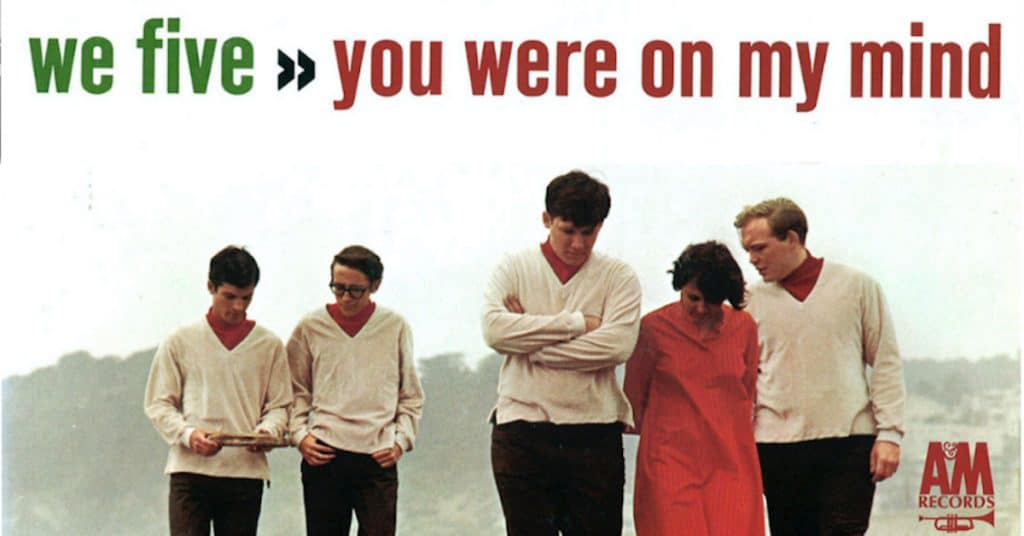
This week in 1965, amid the burgeoning folk revival and the first tentative stirrings of folk-rock, a band named The We Five emerged from San Francisco to claim a sudden and fleeting place in the pop landscape. Their single, “You Were On My Mind,” hit number one on the WKNR Music Guide. It would become both a defining anthem and an enduring enigma: a one-hit wonder whose resonance outlasted its creators’ brief moment in the spotlight.
The song itself was not originally theirs. It was written four years earlier by Sylvia Fricker, half of the Canadian duo Ian & Sylvia, in a modest hotel room in Greenwich Village, where the bathroom , ironically the only roach-free refuge , served as the incubator for what would become a quietly anguished meditation on memory and loss. Fricker’s lyrics, simple, spare, and suffused with a plaintive longing, caught the aching aftertaste of a heart half-broken, half-hopeful. Yet it was We Five’s interpretation that transformed the song into something altogether new: brighter, sharper, tinged with an electric edge that heralded a change in the musical winds. Continue reading “You Were On My Mind” →
The Quiet Orbit of Loni Anderson
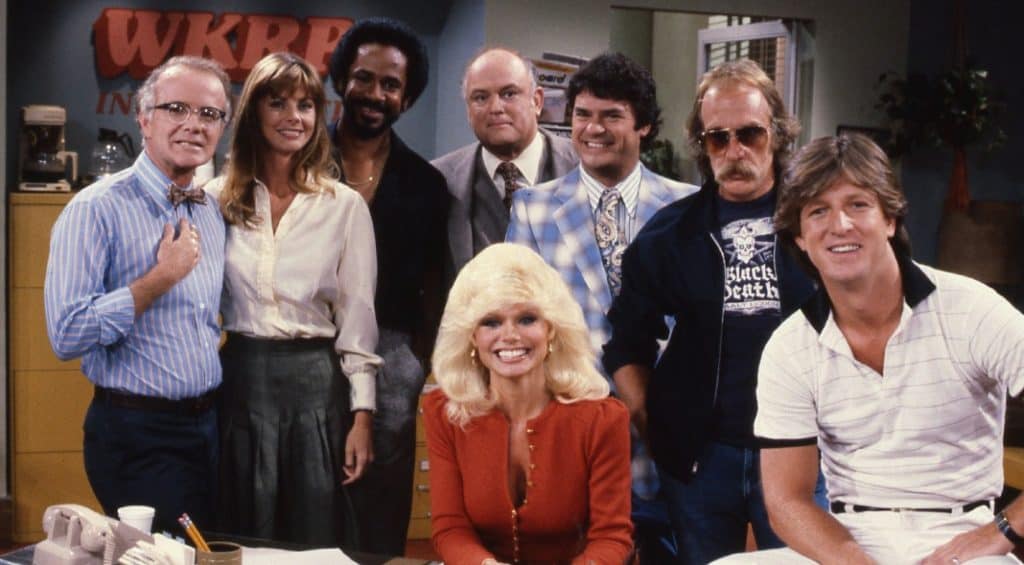 For those of us who grew up addicted to broadcast radio, with its open mics and closed-door politics, “WKRP in Cincinnati” offered both affection and satire. And in that sound booth of a sitcom, no one held the frequency quite like Loni Anderson, who left us this weekend at age 79. As Jennifer Marlowe, the station’s receptionist, gatekeeper, and quiet oracle, Loni brought an impeccable poise to the role, turning what might have been just another dumb blonde into a strategic triumph, a lesson in misdirection, elegance, and the sly power of feminine competence. Continue reading “The Quiet Orbit of Loni Anderson” →
For those of us who grew up addicted to broadcast radio, with its open mics and closed-door politics, “WKRP in Cincinnati” offered both affection and satire. And in that sound booth of a sitcom, no one held the frequency quite like Loni Anderson, who left us this weekend at age 79. As Jennifer Marlowe, the station’s receptionist, gatekeeper, and quiet oracle, Loni brought an impeccable poise to the role, turning what might have been just another dumb blonde into a strategic triumph, a lesson in misdirection, elegance, and the sly power of feminine competence. Continue reading “The Quiet Orbit of Loni Anderson” →
Ozzy Osbourne Courted Darkness and Outlived It
By the time we heard of Ozzy Osbourne’s passing at seventy-six, it felt less like the end of a life than the closing of a parable we’d been reading out loud for decades, unsure whether it was tragedy, farce, or miracle. His death on July 22nd was met with the kind of double take that only Ozzy could provoke: not he’s gone, but he wasn’t already? For most of his public existence, Osbourne seemed to teeter in a permanent twilight between collapse and comeback, a man whose biography was written in tabloid headlines and guitar feedback. That he lived as long as he did felt less like good fortune than a cosmic clerical error. Continue reading “Ozzy Osbourne Courted Darkness and Outlived It” →
The Unbearable Lightness of Being Ringo
 On the seventh of July, a Monday, amidst the unassuming hum of a world carrying on, Richard Starkey, saw his eighty-fifth year. The name he would later adopt—Ringo Starr—needs, of course, no introduction, yet it is the given name that feels more appropriate for the quietude of the occasion. If the Beatles were a singular, four-headed marvel of the twentieth century, then Ringo was its circulatory system—unshowy, indispensable, and possessed of a swing that was as intuitive as a heartbeat. Continue reading “The Unbearable Lightness of Being Ringo” →
On the seventh of July, a Monday, amidst the unassuming hum of a world carrying on, Richard Starkey, saw his eighty-fifth year. The name he would later adopt—Ringo Starr—needs, of course, no introduction, yet it is the given name that feels more appropriate for the quietude of the occasion. If the Beatles were a singular, four-headed marvel of the twentieth century, then Ringo was its circulatory system—unshowy, indispensable, and possessed of a swing that was as intuitive as a heartbeat. Continue reading “The Unbearable Lightness of Being Ringo” →
AT 40 at 55
On the Fourth of July weekend in 1970, America was still catching its breath from the cultural detonation of the previous decade. A new program came to life on just seven radio stations. “Here we go with the Top 40 hits of the nation this week on American Top 40,” the voice intoned. “The best-selling and most-played songs from the Atlantic to the Pacific, from Canada to Mexico.” It didn’t sound like revolution. It sounded like reassurance. Continue reading “AT 40 at 55” →
Bobby Sherman – A Quiet Finale

By June 24, 2025, the world had fallen silent—not with the frenzy that once trailed him, but with a gentle stillness. Bobby Sherman, the sweet-faced teen idol of the late 1960s, died at 81, his final days marked by the same modest grace that shaped his life. Continue reading “Bobby Sherman – A Quiet Finale” →
Lou Christie – The Voice That Pierced the Sky
 To hear a Lou Christie song on Keener for the first time was to experience something more than sound—a kind of pop exclamation mark hurled through a world of four-part harmonies and teenage platitudes. In a musical landscape dominated by the earnest chin-stroking of folk singers and the tight, syncopated machinery of Detroit’s Motown, Christie’s voice arrived like a lightning strike, cutting clean through the Keener airwaves. It was a helium-soaked, heaven-scraping falsetto that didn’t so much sing as spiral—vertiginous, improbable, and entirely unafraid of absurdity. It sounded less like a young man’s croon than the internal monologue of adolescence itself: dramatic, operatic, always on the verge of a glorious crack-up. Continue reading “Lou Christie – The Voice That Pierced the Sky” →
To hear a Lou Christie song on Keener for the first time was to experience something more than sound—a kind of pop exclamation mark hurled through a world of four-part harmonies and teenage platitudes. In a musical landscape dominated by the earnest chin-stroking of folk singers and the tight, syncopated machinery of Detroit’s Motown, Christie’s voice arrived like a lightning strike, cutting clean through the Keener airwaves. It was a helium-soaked, heaven-scraping falsetto that didn’t so much sing as spiral—vertiginous, improbable, and entirely unafraid of absurdity. It sounded less like a young man’s croon than the internal monologue of adolescence itself: dramatic, operatic, always on the verge of a glorious crack-up. Continue reading “Lou Christie – The Voice That Pierced the Sky” →
The Beatles’ EMI vs. Capitol Albums: How America Remixed the British Invasion
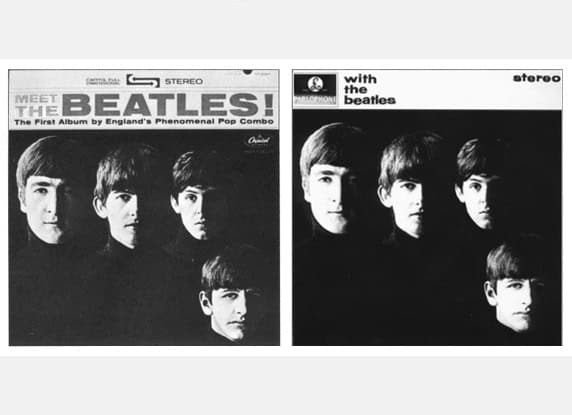 When Beatlemania exploded on Keener, it wasn’t just a cultural phenomenon, it was a marketing war. On one side of the Atlantic stood EMI’s Parlophone label, helmed by producer George Martin and engineer Geoff Emerick, who shaped the Beatles’ artistic journey with a balance of studio innovation and British sensibility. On the other, Capitol Records, EMI’s American subsidiary, played the hits game with a nose for profit. The result? Two Beatles discographies: one curated by the band and their producer, the other chopped, shuffled, and rebranded for U.S. ears.
When Beatlemania exploded on Keener, it wasn’t just a cultural phenomenon, it was a marketing war. On one side of the Atlantic stood EMI’s Parlophone label, helmed by producer George Martin and engineer Geoff Emerick, who shaped the Beatles’ artistic journey with a balance of studio innovation and British sensibility. On the other, Capitol Records, EMI’s American subsidiary, played the hits game with a nose for profit. The result? Two Beatles discographies: one curated by the band and their producer, the other chopped, shuffled, and rebranded for U.S. ears.
And those differences? They tell a deeper story about the transatlantic tug-of-war between artistry and commerce. Continue reading “The Beatles’ EMI vs. Capitol Albums: How America Remixed the British Invasion” →
Remembering Brian Wilson
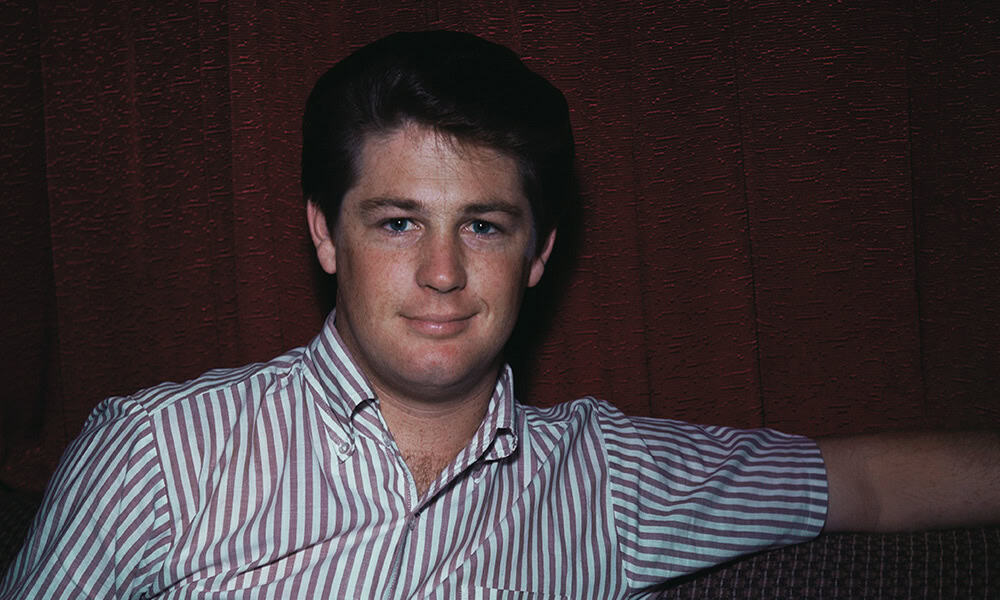 There was always a peculiar geometry to the music of Brian Wilson, a sense of vast, sun-bleached space being meticulously organized inside the four walls of a recording studio. To hear of his passing at eighty-two is to imagine the door to that studio finally closing, a quiet click after decades of miraculous, agonizing noise. Continue reading “Remembering Brian Wilson” →
There was always a peculiar geometry to the music of Brian Wilson, a sense of vast, sun-bleached space being meticulously organized inside the four walls of a recording studio. To hear of his passing at eighty-two is to imagine the door to that studio finally closing, a quiet click after decades of miraculous, agonizing noise. Continue reading “Remembering Brian Wilson” →
Keener Today – June 3
It was a rare moment in time when Steve Schram and I were in the same place without anyone demanding our time. We were both independent agents with a lot more resume paragraphs ahead of us. As was our practice during the days when we roomed together in college, we were sifting through my collection of 45s and reel to reel tapes. Around 3am on June 3, 2002, I threaded the PAMS Clyde jingle demo into the machine and turned up the volume. Continue reading “Keener Today – June 3” →

